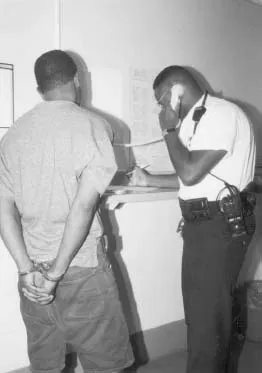Key Terms
community corrections
corrections
courts
criminal justice system
incarceration
incarceration rates
jail
law enforcement
parole
prison
probation
prosecution
It is hard to identify the benefits inmates gain from prison, but the harm done there is readily seen. If you want to increase the crime problem, incite men to greater evil, and intensify criminal inclinations and proclivities, then lock violators up in prison for long periods, reduce their outside contacts, stigmatize them and block their lawful employment when released, all the while setting them at tutelage under the direction of more skilled and predatory criminals. I know of no better way to gain your ends than these. —Harry E. Allen
Crime is everywhere, in all nations great and small. It can affect where we live, where we shop, where we send our children to school, how much we pay for automobile insurance and taxes, and how safe we feel when we are in our communities. In the United States, crime is a violation of criminal statutes passed by elected representatives. These statutes are enforced by a variety of social control agencies, including law enforcement, prosecution, court, and post-adjudication components (e.g., prisons, probation, and parole). These varied agencies and actions, along with their philosophical bases and objectives, are usually called the “criminal justice system.”
No one imposed this specific set of agencies on the nation. We invented them ourselves and, if there is something amiss with an agency or mission, it can be changed. One fact about the American criminal justice system is that it is rapidly evolving and changing as a result of the volume of crime, emerging national priorities, available funding, and changing political ideologies. Behaviors deemed particularly heinous in one epoch may become regulated, if not accepted, behavior in another. For example, the “Great Experiment” of prohibition attempted to protect our national character and youth, increase productivity, lessen collateral problems of idleness, and improve the moral fiber of those using alcohol. It was later abandoned as a national crusade; earlier twentieth-century law enforcement efforts instead lapsed into strategies to regulate alcohol as a controlled substance, concerned only in large part with keeping alcohol out of the hands of youthful consumers and collecting taxes. More recently, we have seen a number of states legalize marijuana, when not so long ago one could be imprisoned for its use.
One component of the criminal justice system is corrections, defined as “post-adjudication processing of convicted criminal offenders.” This definition, if it were ever adequate, probably best fits the correctional scene of the early twentieth century, when the major sentencing options available to sentencing courts were committing the offender to prison or granting probation. In fact, the study of post-adjudication processing of criminal law offenders was, until about 1969, commonly referred to as “penology.” As shown in subsequent chapters, postadjudication has become much more complex in the United States.
The field of corrections, like most of the justice system, has undergone rapid change in the past three decades. Programs have been developed to allow prosecutors to suspend prosecution of alleged criminals, provided they become and remain actively involved in seeking personal development and rehabilitation under a “deferred prosecution” program. Pretrial detention of accused law violators is now used less frequently due to the development of personal recognizance programs that have reduced the importance of bondsmen in the pretrial portion of the system. In addition, the tools of technology have grown greatly in the past three decades, expanding probation supervision into conventional probation, intensive supervised probation, house arrest (with or without electronic monitoring or global position system [GPS] tracking), community service, day-reporting centers, and restitution programs. There are even probation variations that combine serving a sentence in jail before probation begins, and several probation programs that require a period of imprisonment prior to return to the community under probation supervision. These latter programs, incidentally, are part of the “intermediate sanctions” that have emerged in the past 40 years: offender control programs that fall somewhere between probation and imprisonment. All of this and more will be discussed later in this book.
Booking into local jail. [Photo courtesy of Beth Saunders]
What has corrections become? How can we best define it at the pres...

